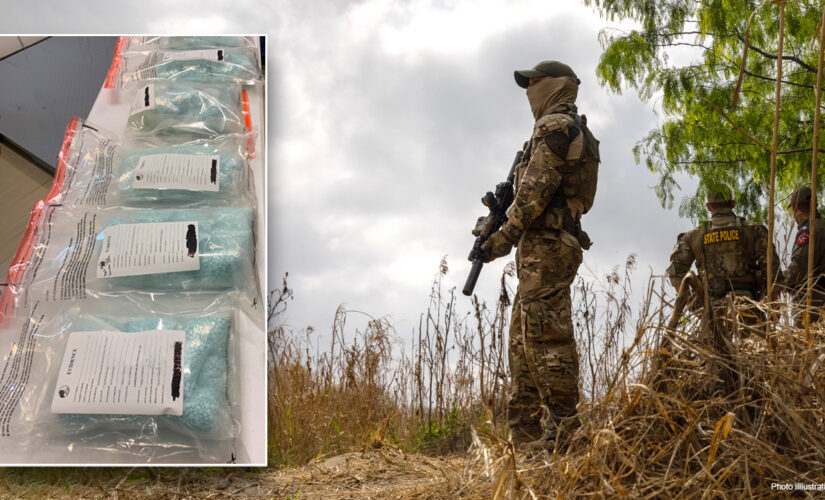Mexico is now the dominant source for fentanyl coming into the United States, a new report released this week has found — with most of the deadly drug coming in through the southern border.
The report by the bipartisan Commission on Combating Synthetic Opioid Trafficking – which was established by the FY 2020 National Defense Authorization Act – said the source of fentanyl into the U.S. has evolved from 2014-2019, when most fentanyl came in from China via international mail.
REPUBLICAN ATTORNEYS GENERAL CALL FOR ACTION ON ‘FENTANYL SCOURGE’ FROM CHINA, MEXICO
“Since then, the dominant source of illegally sourced fentanyl has been Mexico,” the report says. “The drug is manufactured in illegal laboratories there using precursors from Asia – mainly the PRC – and is trafficked principally by land into the United States.”
The report says that fentanyl from Mexico is typically of very low purity but now accounts for almost all the fentanyl encountered by law enforcement since 2019. The report finds that fentanyl is trafficked “primarily across the southwestern border but also by passenger boat, cargo ship, train, commercial plan, drone and mail carrier.”
It also warns that the policies of the Mexican government have not been successful in tackling the challenge of fentanyl trafficking, which it says has shown to be a more profitable alternative than heroin for Mexican traffickers.
“The Mexican government, in part out of self-preservation and in part because the trafficking problem transcends current law enforcement capacity, recently adopted a ‘hugs, not bullets’ approach to managing the transnational criminal groups,” according to the report. “However such approaches have not been able to address trafficking issues, and further efforts will be needed.”
A Texas Department of Public Safety (DPS) trooper looks over the Rio Grande at the U.S.-Mexico Border on March 23, 2021, in McAllen, Texas. (John Moore/Getty Images | DEA)
Fentanyl, an opioid for pain treatment, is between 50 and 100 times more potent than morphine. In Fiscal Year 2021, Customs and Border Protection (CBP) seized 10,586 pounds of the deadly drug at the southern border, which can be fatal in extremely small amounts. That is up from 4,558 pounds seized in FY 2020 and 2,633 pounds seized in FY 2019.
Recently, Texas Gov. Greg Abbott warned that Texas law enforcement had seized enough fentanyl to kill 222 million Americans. The commission found that the majority of the 100,000 overdose deaths in the most recent 12-month period were caused by a synthetic opioid such as fentanyl.
FENTANYL OVERDOSES BECOME NO.1 CAUSE OF DEATH AMONG US ADULTS, AGE 18-45: ‘A NATIONAL EMERGENCY’
“The overdose crisis in the United States claims more lives each year than firearms, suicide, homicide, or motor vehicle crashes,” an accompanying letter by co-chairs Sen. Tom Cotton, R-Ark., and Rep. David Trone, D-Md., says. “This is one of our most pressing national security, law enforcement and public health challenges, and we must do more as a nation and a government to protect our most precious resource — American lives.”
The report calls for a multipronged strategy that includes treatment for addicts, a combination of law enforcement and diplomacy to shut down chemical sources and better research to understand addiction and develop treatments.
Biden administration officials have said the White House has already issued two executive orders to counter fentanyl trafficking and called on Congress to pass his $41 billion request to address the overdose epidemic.
The report recommends elevating the White House Office of National Drug Control Policy to act as a hub for federal efforts and to give the director a Cabinet position.
CLICK HERE TO GET THE FOX NEWS APP
Republican attorneys general from 16 states recently urged the Biden administration to take action against China and Mexico to stop the influx of fentanyl into the U.S.
“Mexico must likewise be pressured to take swift and forceful action against the cartels that are producing finished fentanyl and trafficking this poison across the border into our country,” they say. “The Mexican government’s negligence in permitting the erection of industrial scale manufacturing of fentanyl is inexcusable.”
The Associated Press contributed to this report.




